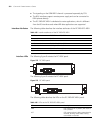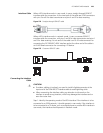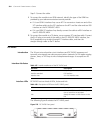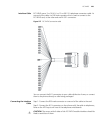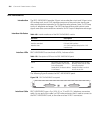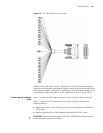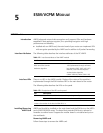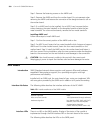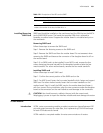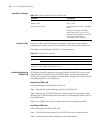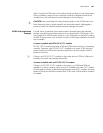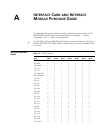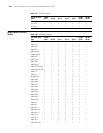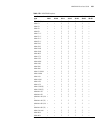
230 CHAPTER 5: ESM/VCPM MODULE
Step 1: Remove the fastening screws on the ANDE card.
Step 2: Remove the ANDE card from the mother board. Do not overexert when
removing the ANDE card because the connector of the daughter board is still on
the mother board.
Step 3: If no ANDE card is to be installed, for an MSCA card, remove the four
screws fastening the metal standoff on the daughter board and take the four
metal standoffs. For other mother boards, remove the four metal standoffs.
Installing ANDE card
Follow these steps to install ANDE card:
Step 1: Confirm the correct position of the ANDE card on the
Step 2: For MSCA card, fasten the four metal standoffs which fasten and support
ANDE card. For other mother boards, fasten the four metal standoffs on the
mother board. Step 3: Install the ANDE card on the mother board and fasten it
with four screws. During installation, align the two connectors under the daughter
board to the connectors on the main board to avoid damage to the connectors.
c
CAUTION: You should connect a cable to the port with the correct mark.
Misplugging is prone to impair the interface card and even damage the router.
SNDE Module
Introduction SNDE (Standard network data encryption card) supports IPSec and hardware
expedited IP data packet encryption, thus providing encryption with high
performance and reliability.
Installed with an SNDE card, the main board of your router can implement VPN
with encryption provided by the SNDE card in addition to IP packet forwarding.
Interface Attributes The following table describes the interface attributes of the FIC-HNDE.
Interface LEDs There is no LED on the SNDE module. Display of the status of the module is
implemented through the ESM interface LED on the main board of the router.
The following table describes the LEDs on the SNDE panel.
Table 173 Interface attributes of the SNDE module
Attribute Description
Protocol supported IPSec
IPSec concurrent tunnels 100 (implemented through software)
Hardware algorithm key algorithm (DES, 3DES, AES, QC5,
Blowfish, Cast-128 and SkipJack)
Authentication algorithm
(HMAC-MD5-96, HMAC-SHA-1-96)



